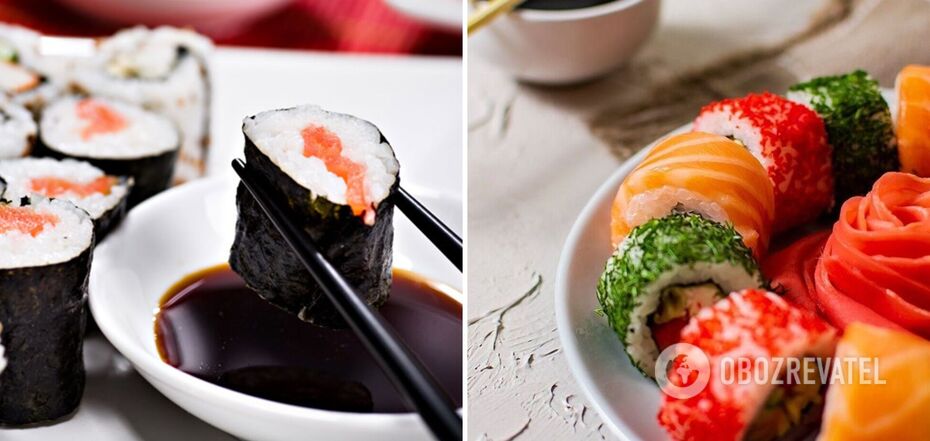Food
How to choose the right ingredients for sushi
It's common to say that fashions go out of style. In my memory, Japanese cuisine in general and its flagship, sushi, were the most striking example of culinary fashion. But they are still here. Sushi is extremely popular among Ukrainians, and not only because of the harmonious combination of taste and nutritional value.
A traditional sushi recipe includes rice flavored with vinegar, and various fillings, which are dominated by seafood, but can also include meat, vegetables, mushrooms, or eggs. Sushi is often wrapped in seaweed.
Let's take a look at the individual ingredients, their nutritional properties, and how to make sushi as healthy as possible.
RICE
Short-grain white rice, which is most commonly used in sushi, contains vitamins such as thiamine, riboflavin, B6, and folic acid, as well as calcium, iron, magnesium, phosphorus, and potassium.
To make sushi healthier, you can use brown rice instead of white. Whole grain rice has fiber and more natural nutrients. However, it's usually not as sticky as refined white rice, so it can be more difficult to make sushi with.
SEAWEED
Contains many biologically active compounds, including polyphenols, sterols, alkaloids, flavonoids, tannins, proteins with essential amino acids, and polyunsaturated fatty acids. These compounds have high nutritional value and many benefits. For example, seaweed polysaccharides have a positive effect on the functioning of the intestinal tract, but unlike fiber, they are non-caloric.
At the same time, some types of seaweed contain dangerously high amounts of iodine and harmful metals such as arsenic.
FISH
Different types of fish are used to make sushi. The best choice is wild salmon. It contains proteins, healthy fats, vitamins A, B6, and B12, thiamine, riboflavin, folic acid, trace elements magnesium, potassium, phosphorus, zinc, and selenium.
Boiled fish is the safest to eat. Raw or even undercooked fish carries a risk of foodborne and parasitic infections. If you use raw fish, you need to freeze it before eating, but even then, cold cannot kill all harmful bacteria and parasites. Especially pregnant women, the elderly, and people with weakened immune systems, including those with cancer and diabetes, should avoid eating raw or undercooked fish and seafood.
Another risk is mercury, which accumulates in fish and seafood. About 400 grams of fish per week is recommended, choosing species with a lower mercury content. These include herring, salmon, cod, and trout. Fish with a very high mercury content include king mackerel, orange roughy snapper, swordfish, tilefish, and bigeye tuna, which fortunately are almost not available in Ukraine.
Sushi bought in a store or restaurant can contain a lot of hidden calories and salt. After all, they often add cheese, mayonnaise, fried ingredients, and a lot of soy sauce, which has a high sodium content.
Sushi is a healthy dish when all the ingredients are simple and natural. If you make sushi at home, you can avoid adding a lot of high-calorie ingredients, such as cream cheese, and limit the salt content by using minimal soy sauce. In addition to fish and seafood, you can add pieces of vegetables or fruit, such as cucumber, carrot, mango, or melon, as a filling to sushi.



























